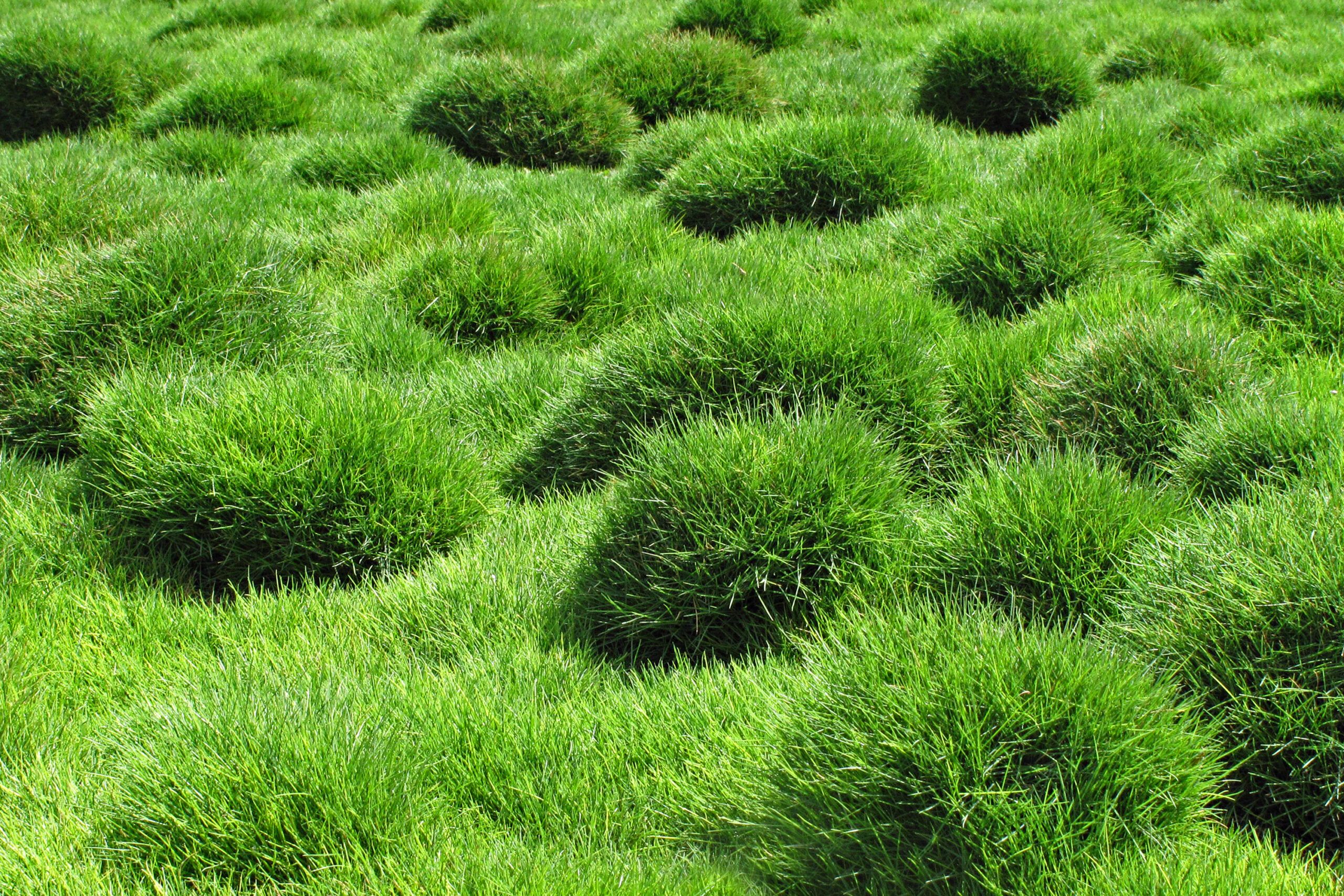Unless you live in the middle of a golf course, your lawn is likely to be somewhat sun-deprived—indeed, as much as 25 percent of it is no doubt shaded to some degree, according to The Lawn Institute.
Trying—and failing—to grow grass in these areas is a common frustration for homeowners, since after all, sunlight is key to photosynthesis, the process that triggers plant growth. Fortunately, some photosynthesis-efficient grass species do just fine in partial sun. It takes more than the right seed, however, to successfully grow grass in low light locations.
6 Types of Grass That Grow in Shade

The following six grasses are most likely to flourish in shade:
- St. Augustine (warm season), especially such cultivars as Sapphire, Bitter Blue, Palmetto, and Seville, can do well with as little as four hours of direct sun daily.
- Centipede (warm season) grass can make do with about six hours of partial sun daily. Oaklawn and Tennessee Hardy tend to be the most shade-tolerant cultivars.
- Zoysia (warm season) requires as little as three hours of daily direct sunshine, making it well-suited to lawns with partial shade. Fine-blade Zoysia varieties tend to do best in shady spots.
- Fescue (cool season) to the rescue! Thanks to its deep roots, fescue can thrive with only four hours of dappled sun. Fine fescue, tall fescue, red fescue, and Chewings fescue can all thrive in shade.
- Perennial ryegrass (cool season) is a cultivar that can succeed with four hours of full sun daily.
- Rough bluegrass (cool season) is a member of the bluegrass family that can flourish with only four hours of dappled sunlight daily. Just don’t expect it to survive intense summer heat.
Other shade-tolerant, warm-season grasses include bahiagrass, carpetgrass, and bermudagrass. Other shade-tolerant, cool-season grasses include bentgrass and some cultivars of Kentucky bluegrass.
How to Grow Grass in Shade
Read on to learn about the best grass for shade and the secrets of nurturing it to make your entire lawn beautifully lush and green.
Size up your shade
Different grass species require varying amounts and strengths of sunlight. A rule of thumb from the lawn pros at Scotts states that even the most shade-tolerant grasses need a minimum of three to four hours of direct sun or four to six hours of partial or dappled sun (the sort that comes through the leaves of trees) daily.
Chances are, most shady areas of your lawn do get their share of sun, so observe your property at different times to get a sense of how much sun the shady areas actually get. If stubborn spots below trees seem truly sun-starved, remove some of the lower branches to raise the canopy, allowing more light to filter through.
Plant the right mix of seed
How to grow grass in shade? Start with the best mix of seed. While it’s helpful to know which species and cultivars suit your shade and climate, most grass seed companies (including Scotts, Pennington, and Greenview) offer mixed bags designed for different shade/sunlight levels.
A “dense shade” mix, for example, is best for lawns that consistently receive no more than four to six hours of filtered sun daily, while a blend that simply says “shade” will need more direct sun to flourish. A mix is likely to yield nicer-looking results than one shade-tolerant species alone because it should produce grass that will blend better with the rest of the lawn.
Click with your climate
All turf grasses belong to one of three climate categories: cool season, warm season, and transition. Cool-season grasses flourish in regions prone to freezing winters and hot summers that have growing season temperatures between 65 and 80 degrees F (among them, the upper Great Plains and Midwest, and New England).
Warm-season grasses thrive in the lower Southeast and Southwest, where growing-season temperatures range between 80 and 95 degrees. In between, across the country, lies the transition zone, where both warm-season and cool-season grasses can do well.
Manage mowing in shady spots
Adjust your mower to leave the grass taller in shaded areas. The longer the individual blades of grass, the more sunlight they can absorb, even in shade.
Longer blades are also more resistant to stress and fungus afflictions. So cut no more than the top one-third, and make sure your mower blades are sharp—a cleaner cut makes for stronger grass.
Water the right way
Grass in shady areas tends to stay moister than parts of the lawn subject to ample direct sun, so it needs less water. Grass that’s too wet may be prone to fungal diseases, which can appear as brown patches, slimy spots, or a pesky crop of mushrooms.
So, as a general rule, water shaded areas less frequently and in the morning. The exception may be grass under trees, since it must compete with tree roots for water (as well as nutrients and oxygen). Trimming lower boughs to lift the canopy will allow more water through—think of it as punching holes in an umbrella.
Pump up the potassium
In terms of fertilizer, shaded areas need less nitrogen and more potassium than sun-drenched areas, according to The Lawn Institute. Nitrogen makes plants more succulent—potentially weakening the blades and inviting fungal issues. Potassium does the opposite, enhancing tolerance and boosting disease immunity.
Reduce stress and add density
Minimize the amount of traffic and trampling in shaded spots. The less ball playing, pooch romping, and lawn chair dragging in these areas, the better. And to keep grass looking thick and lush in low light conditions, overseed—the practice of adding seed to an existing lawn—in the fall. Be patient, as grass that grows well in shade might not grow as fast as sun-soaked grass.
